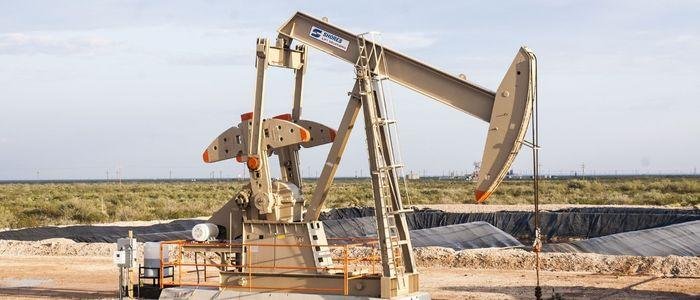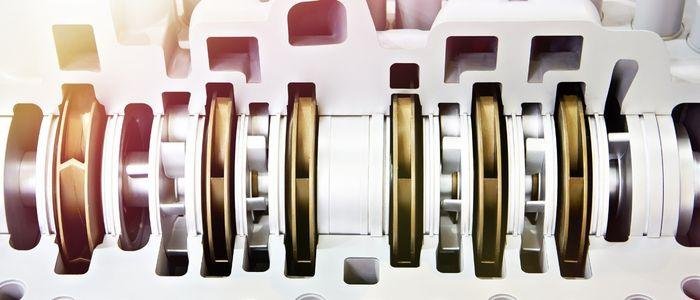Most of the time, the pump will be somewhere between the point of suction and the point of discharge. The suction lift is the distance (height) between where the suction comes from and where the pump starts. The discharge head is the distance (elevation) between where the pump is and where the water comes out.
The suction lift is the most important. The charge should go at least 10 meters. Because of this, the pump for many irrigation wells is inside the well. Many wells have two places to get water.
If the slurry suction pump is at a lower level and the water in the well is rising. The pump should be moved to a higher level. If the required discharge head is high, you can deal with it by choosing a pump with a bigger impeller diameter.
This post will give us more information on the importance of slurry suction pump.

What Determines Vertical and Horizontal Suction Pumps?
The barrel-shaped structure of the vertical slurry suction pump below the ground gives it a more positive NPSH than a horizontal pump.
Most horizontal pumps have a 90-degree angle between where the pump takes in water and where it sends it out, but vertical pumps have a 180-degree angle.
The impellers in vertical pumps have more than one stage, and one impeller works as the suction for the other. It means vertical pumps have a higher pressure and head than horizontal pumps, which only have one or two casings.
Most vertical pumps don’t cavitate because the barrel under the pump is always full of liquid. However, a slight change in pressure, or NPSH, can cause a horizontal pump to cavitate.
The motor of a vertical slurry suction pump is above the pump. If something breaks in the pump, the maintenance team must first drop the motor before they can start working on it. If something is wrong with a horizontal pump, the maintenance team can begin working on it without dropping the engine.
How do I Choose Horizontal or Vertical Pumps?
Below are reasons for considerations
Priming
If the liquid to be pumped is below floor level, the vertical turbine pump doesn’t need any special priming equipment because the impellers are always submerged. But if a horizontal pump is used, the water must be brought up to the impeller before the pump can be turned on.
Net Positive
Suction Head: To avoid cavitation, the available net positive suction head (NPSH) must be higher than the NPSH that the pump needs. For a given set of conditions, the available NPSH goes up as the water depth over the pump increases or, if there is a suction hit, as the lift goes down.
As we discussed in the section above about priming, vertical pumps don’t need a suction lift, and it’s usually easy to get enough submergence by choosing the correct length of the vertical column. This gives enough NPSH to make it easier to choose the right pump “cavitation-wise.”
On the other hand, a given horizontal pump can’t be changed because the plant layout sets the amount of suction lift or submergence. So, when the NPSH is very low, it is usually much easier to change a vertical pump than a horizontal one.

Flexibility
When changes in pumping heads are expected because of plant expansion, changes in a process, or moving the pump to a different service, it is easy and cheap to add or remove stages from a vertical turbine-type pump to meet the new conditions. Many people who use horizontal pumps know they are limited in this way. To make up for this, they tell manufacturers of new equipment that full-diameter and minimum-diameter impellers are unacceptable.
This practice can sometimes mean that to avoid using a full-diameter impeller; the manufacturer has to choose a pump that is bigger than what is needed for the initial conditions and is less efficient. So, in some cases, the initial costs and the costs of running the unit go up.
diameter if and when required. It is because, if necessary, the unit needs to be able to increase its head by swapping in an impeller with a larger diameter. Vertical turbine pumps, however, are easy to stage and de-stage. When more charges are expected, the vertical turbine can be built so that more steps can be added in the future, usually at a low cost compared to the unit’s price at the start.
Corrosion and Abrasion
Operating personnel are well aware of the high cost of repairs and downtime for many pumps that are used in corrosive and abrasive environments. On vertical turbine pumps, the fluid being pumped is used to grease the bearings. When compared to horizontal centrifugal units, where the pump bearings are usually, if not always, lubricated with oil or grease and are entirely separate from the fluid being pumped, this is a clear disadvantage.
Inspection and Repair
Generally, it is much easier to inspect, maintain, and repair a horizontal pump than a vertical turbine pump.
How Are a Centrifugal Pump and a Self-Priming Pump Different?
We see centrifugal pumps and self-priming pumps every day. What’s the difference between the two? The product officer will tell you about them.
Different combinations
The impeller, the pump body, the sealing ring, the stuffing box, and four other parts make up a centrifugal pump. The self-priming pump has a suction chamber, an oil storage chamber, a vortex chamber, a liquid return hole, and a gas-liquid separation chamber.
Different ways to get going
To turn on the centrifugal pump, you need to fill the water inlet pipe and the pump body with water or use other equipment to pump air into the water inlet pipe. When the self-priming pump is turned on, the right amount of circulating water needs to be added to the pump body.
Different devices
Air extraction equipment must be in place, and the bottom valve or outlet must be installed under the inlet pipe of the centrifugal pump. The self-priming pump doesn’t need a bottom valve but a filter screen under the water inlet pipe.
Different uses
Centrifugal pumps are mostly used for moving liquids, cooling, industrial cleaning, aquaculture, fertilization, computing and testing, and industrial equipment. They can also move electric power, coal, and building materials and make a granular slurry.
Self-priming pumps
Are commonly used on farms, in nurseries, orchards, and other places where water needs to be sprayed.
Most filter presses can use clear water, seawater, acid-base chemical solutions, or slurry that looks like a paste.
Different advantages
The centrifugal pump is small and has a significant flow rate and control range in the field. It can be used in liquids that are only slightly acidic. The flow rate is even, the operation is stable, there isn’t much shaking, and the costs to install and keep it running are low.
The structure of the self-priming pump is also minimal; it is easy to use, works well, is easy to maintain, has a high use efficiency, and can be used for a long time.
Why do Pumps Create Suction?
When the impeller of a pump turns, it moves water out of the suction pipe. When a large amount of water is transferred, a space, or “vacuum,” is created in the suction pipe. This is how a pump creates suction for the fluid.

The diameter of the suction pipe is always more important than the diameter of the discharge pipe for getting the right amount of fluid at the suction pipe. This setup keeps friction losses to a minimum so that a lower value of suction, or vacuum, is enough for a pump to work correctly.
How to increase suction in a centrifugal pump?
Answering this question will depend on what the centrifugal pump is used for and where it is. Here are some examples:
- The pump is cavitating. Lower the pump’s foundation so that the NPSHA level goes up.
- The pump needs a booster pump to keep its suction. – Adding more pumps or making them work better.
- The pump is next to a tank, so the level in the tank should always be high.
- The inductor can also raise the pressure of the pump’s suction.
What is the Maximum Suction Lift for Pumps?
If you made a perfect vacuum, there would be a difference of one atmosphere in pressure between the vacuum and the atmosphere—about 14.7 pounds per square inch of force above. About 32 feet of water are equal to that amount of stress. All done.
A perfect vacuum is the best thing you can have. You can’t make the pressure in the air higher than it is. No pump is perfect, so it can’t create an ideal vacuum. However, some pumps get pretty close. Most pumping systems aim for 30 feet of water as their goal. If you need to move water higher than that, you have to pump it. You can’t blow as high as the air can push.
If you want to know more about the Kingda Slurry Suction Pump, Contact us now!


